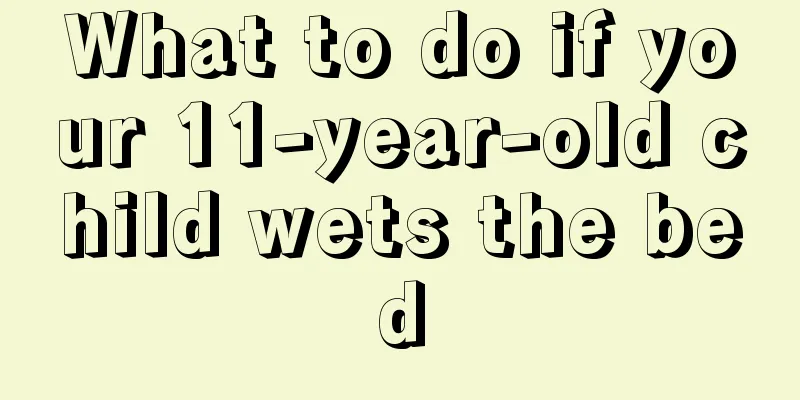Is it normal to cough after roseola infantum?

|
Roseola infantum is a disease with a high incidence rate, which often occurs in children. The most obvious symptom of roseola infantum is fever, but some children may also have runny nose, cough and other symptoms. Babies with roseola infantum need to be actively treated. This disease usually does not heal itself. Since many novice parents do not know much about roseola infantum, they often do not know whether coughing is normal when their babies have roseola infantum. Is coughing normal after roseola infantum? It is normal for children with roseola to have a cough, and treatment must be sought actively. What to do if a child has a cough after having an exanthema The red rash that appears after the fever subsides is a typical phenomenon of roseola infantum. Roseola infantum is a viral infection with a good prognosis. If the fever has subsided and the rash has appeared, it is generally no big problem and don't worry. If cough occurs after the rash appears, it is considered to be caused by cold. Generally, symptomatic treatment can be sufficient. You can take antiviral drugs, such as ribavirin granules, together with children's cough syrup, drink plenty of boiled water, and avoid cold and wind. How to care for infantile rash Roseola infantum, also known as wild wind sha, is also transmitted by airborne viruses. The rash that develops in infected infants is milder than rubella and is not very contagious. It is possible to acquire permanent immunity after infection. The disease is more common in infants under 2 years old, the vast majority of which are babies under 1 year old, especially those under 6 months old. This disease can occur in all seasons, but is most common in spring and winter. Both men and women can be affected. The incubation period of roseola infantum is 8-14 days, with an average of about 10 days. The onset is acute, with no prodromal symptoms, and sudden high fever, with body temperature mostly between 39 and 41 degrees. The high fever will subside naturally after 3-5 days. When the fever subsides, scattered rose-colored maculopapules will appear, surrounded by light red halo, which will disappear with pressure. It first appears on the neck and trunk, and quickly spreads to the whole body, with the most on the waist and buttocks, followed by the head, forehead, neck, upper arms, etc., and rarely on the face and below the knees. The rash appears within 24 hours and disappears within 1-2 days. No stains or flaking. The characteristics of this disease are high fever accompanied by vomiting, mild diarrhea, loss of appetite, and occasional convulsions. Unlike children with general high fever, their spirits and moods are still good and they can laugh. This disease rarely has complications, but the rash can be easily confused with mild measles and mild scarlet fever, so a doctor should be consulted to confirm the diagnosis. For children with roseola infantum, the main thing is to strengthen care, pay attention to observe the condition, and treat the symptoms accordingly. If you have a high fever, you should rest in bed, apply cold, wet fur to your head, drink plenty of warm water, and eat liquid or semi-liquid food. Sick babies who are breastfed can continue to be fed, and those who have already started to eat complementary foods can stop for a few days. After the fever subsides in 3-5 days, they can still be fed according to their age. If the high fever persists or convulsions occur, go to the hospital for diagnosis and treatment immediately. After an infant has come into contact with a sick child, the infant's condition should be carefully observed within 10 days. If the infant develops a high fever, a doctor should be consulted as soon as possible. |
<<: What causes roseola in infantile eczema?
>>: Can babies with roseola take antipyretics?
Recommend
What should I do if a boy has a nosebleed?
For boys with bleeding, we must pay attention to ...
Why does my baby poop after eating egg drop soup?
Every child is a piece of apples and apples in th...
What causes a baby's heart murmur?
Every newborn baby is an extremely precious treas...
Children wet the bed at night_What to do if children wet the bed in the middle of the night
If the baby wets the bed, it is undoubtedly a big...
How to deal with facial abrasions in children
If a child has a serious facial abrasion, he or s...
How many times do children change their teeth?
Teeth are one of the most important things in a p...
How to educate a 4-year-old child
Children are naughty by nature and are not bound ...
How to treat drooling in cerebral palsy
Children with cerebral palsy often drool. Parents...
What should I do if my baby’s hair is hot? Parents need to understand this knowledge
Every parent is particularly concerned about the ...
What are the symptoms of mycoplasma infection in children?
After the microorganism Mycoplasma enters the hum...
What are the causes of nosebleeds in 2-year-old children?
Some people always think that nosebleeds only hap...
What psychological problems do children from single-parent families have? These are the 7
The psychological problems of children from singl...
How to cure a child's stuttering?
I believe that many parents want to know how to t...
What causes children to grind their teeth?
Children's teeth grinding is a problem that w...
What to do if your baby has head lice
Lice are parasites that usually live in dirty pla...









